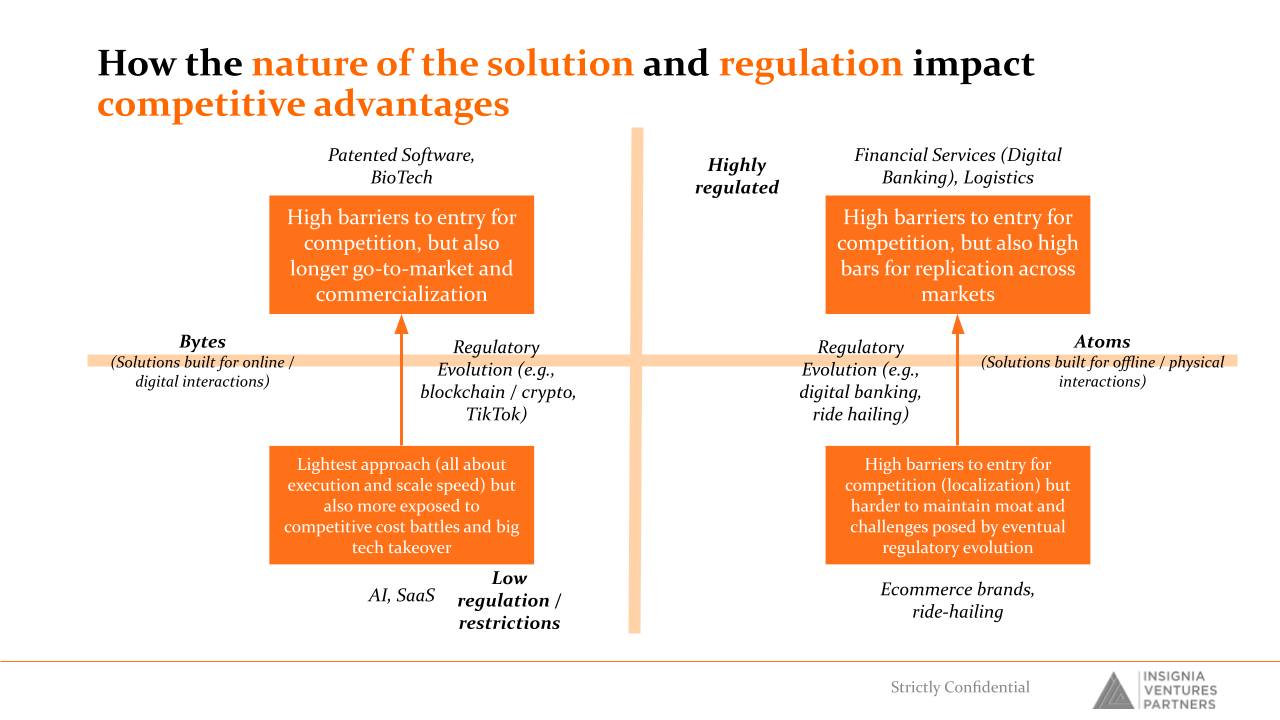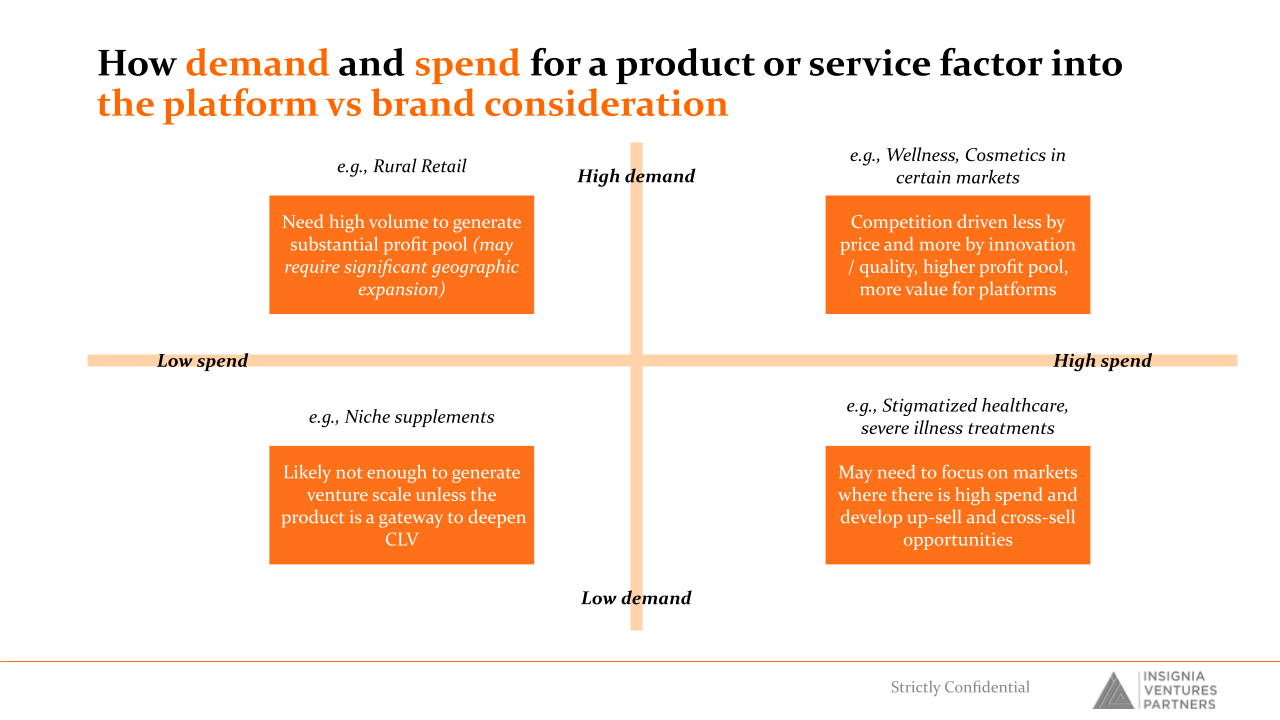(1) One great founder relationship leads to another
An investor long enough into their career can build a flywheel with the founders they partner with and the relationships they build, even across firms and funds they are a part of.
Yinglan knew JJ Chai when he was in Carousell, a company he led an investment for in his previous firm. When JJ set out to start Rainforest, Yinglan, this time through Insignia, was there to support and even introduce a co-founder who became CFO of the company.
Later on JJ, through his own angel investing, met Theo, who was starting Intellect, and introduced the young founder to Yinglan.
See this similar story from Indonesia between Super’s Steven Wongsoredjo and Ajaib’s Anderson Sumarli:
(2) Finding the sweet spot for a startup between atoms and bytes may not be enough.
There is another dimension to consider — just how regulated the industry is. Regulation can slow down a company’s go-to-market but if key regulatory relationships and documentation is built up (e.g., licenses), this can pose a high barrier to entry for competitors, especially for first-movers.

How the nature of the solution and regulation impact competitive advantages
Ajaib found their sweet spot in this matrix, developing a platform for retail investing that was the first of its kind in Indonesia, enabling access to mutual funds, stocks, crypto, and even banking services all in one platform. All of these services were launched on the heels of acquiring key licenses and industry players (e.g., traditional stock brokerage and bank) throughout their journey.
(3) Not all brand opportunities are equal

How demand and spend for a product or service factor into the platform vs brand consideration
For brands, it really depends on the SKU perception and adoption in that market and how that impacts the consumer’s propensity to pay vis-a-vis profit margins to create a substantial profit pool for the business to use for innovation.
For example, while there may be more consumer spending on cosmetics in Indonesia, how much consumers spend may be higher in Thailand. For the former, brands will have to compete on volume, while for the latter, brands will have to compete on quality and capturing new SKUs (cross-sell, up-sell).
And so if it is high value market for brands, it is likely that becoming a platform for that type of SKU or product set will be even more high value, because platforms tap into the value generation with less risk on operations and assets.
Konvy tapped into the strengths of Thailand’s beauty industry to become a market leading platform for beauty brands to not just sell in Thailand but also in other Southeast Asia markets like the Philippines.
(4) Prioritizing critical impact vs winning odds in supporting a startup
Prioritizing is important for an investor. While it makes sense to focus on companies the investor assesses to have the highest chances of winning (i.e., a portfolio perspective), another approach is to have a radar on for the investor to be there with their founders at their most critical decision making moments. There is more nuance that goes into the latter approach, developed over a career, but prioritizing the impact of when and where you as an investor are present with a company can be pivotal not just in terms of driving portfolio returns but also deepening relationships.
(5) Following the money is not enough to find a great startup — are you following the talent?
Following the money develops an alpha for specific market opportunities. But it’s following the talent that really unlocks an investor’s view into partnering with the right companies (right for both the founder and investor).
One of the biggest advantages for an investor is anticipating what people will do, or having some kind of view into the flow of talent. For example, seeing the exodus of Chinese entrepreneurial talent into Singapore might be advantageous for an investor whose value-add revolves around helping entrepreneurs gain the right inroads with the Singapore government and setting up shop in the country. An investor having visibility on which talent are leaving their exec roles or leadership jobs can expand their pipeline of potential investments to include these potential founders.
For example, Yinglan’s past experiences as an investor in Gojek meant he got to know many of the leadership team. One of them, Dayu Dara Permata, eventually left to start her company and Insignia Ventures partnered with Pinhome early in its journey.
These insights were shared as part of XA Network’s “Meet the VC” series, where their members gathered at our office for a discussion with Yinglan Tan on investing, tech, and Southeast Asia, moderated by XA member and Insignia founder, Jia Jih Chai, CEO and co-founder of Rainforest.
Yesterday, we shared insights on their discussion around trends in Southeast Asia.
Go beyond theory and experience what it’s like from the VC perspective in Insignia Ventures Academy’s 12 week VC Accelerator. Applications for the June and September cohorts this year are now open! Schedule a call with the program lead.
Paulo Joquiño is a writer and content producer for tech companies, and co-author of the book Navigating ASEANnovation. He is currently Editor of Insignia Business Review, the official publication of Insignia Ventures Partners, and senior content strategist for the venture capital firm, where he started right after graduation. As a university student, he took up multiple work opportunities in content and marketing for startups in Asia. These included interning as an associate at G3 Partners, a Seoul-based marketing agency for tech startups, running tech community engagements at coworking space and business community, ASPACE Philippines, and interning at workspace marketplace FlySpaces. He graduated with a BS Management Engineering at Ateneo de Manila University in 2019.